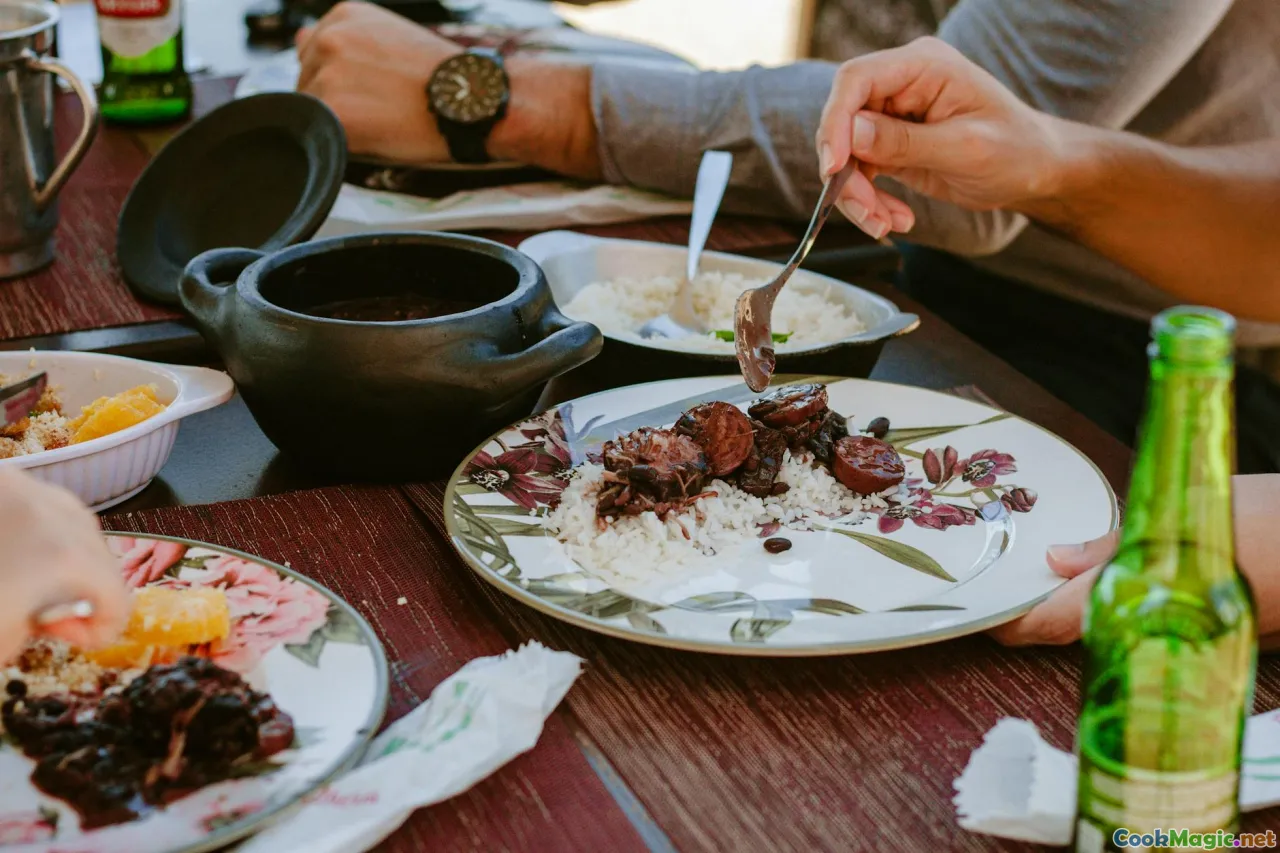The Art of Feijoada: More than Just a Dish
7 min read Discover the rich history, cultural significance, and sensory delights of feijoada, Brazil's iconic stew that embodies more than just a meal. April 19, 2025 19:00
The Art of Feijoada: More than Just a Dish
Imagine a bubbling pot of savory, smoky goodness simmering in a bustling kitchen, filling the air with an irresistible aroma that beckons friends and family alike. This is the essence of feijoada, Brazil’s beloved national dish — a culinary masterpiece that transcends mere sustenance to embody history, community, and cultural identity.
An Invitation into Brazil’s Heart: The Origin and Evolution of Feijoada
Feijoada’s roots are as layered as its ingredients. The dish’s origins trace back to Portuguese colonization, where the traditional feijoada—a hearty bean stew—was adapted by enslaved Africans and indigenous peoples. Over centuries, it evolved into a symbol of Brazilian hospitality and resilience.
Historically, feijoada was considered a humble peasant dish, made from inexpensive cuts of pork, beans, and local vegetables. Its ability to transform modest ingredients into a flavorful feast made it a staple among workers and farmers. Today, it stands as a testament to Brazil’s multicultural tapestry, blending African, Portuguese, and indigenous influences.
The Cultural Significance: More Than Just a Meal
Feijoada is woven into the social fabric of Brazil. It’s often served on Wednesdays and Saturdays, times designated for communal gatherings. Families, friends, and neighbors come together around large tables, sharing stories and laughter over steaming plates of this iconic stew.
In many regions, feijoada is a celebration of life itself — a ritual of togetherness, resilience, and pride. It’s customary to accompany it with lively music, dancing, and vibrant conversations that echo the diversity of the Brazilian spirit.
The Ingredients: A Symphony of Flavors and Textures
The Meat: A Melange of Savory Delights
At the heart of feijoada lies an array of pork products — black sausages like linguiçaandcalabresa, smoked ribs, ham hocks, and salted pork fat. These cuts impart a smoky, salty depth that infuses the beans with rich flavor.
Some variations include beef cuts or chicken, but the traditional focus remains on pork. The use of salted and smoked meats is crucial, as it adds layers of complexity and umami to the dish.
The Beans: The Soul of the Stew
Black beans are the classic choice, their dark, glossy appearance and earthy flavor anchoring the dish. When slow-cooked, they absorb the savory juices, resulting in a velvety, hearty base.
Aromatics and Spices
Garlic, onions, bay leaves, and black pepper form the foundational aromatics. Some cooks add cumin or coriander for a subtle spice undertone, elevating the complexity.
Accompaniments: A Feast for the Senses
Feijoada is traditionally served with white rice, which provides a neutral canvas to balance the intense flavors. Sides include crisp collard greens sautéed with garlic, orange slices for a tangy contrast, and farofa — toasted cassava flour that adds crunch.
The Cooking Technique: Patience and Precision
Preparing authentic feijoada is an exercise in patience. The process begins with soaking the beans overnight to soften them and reduce cooking time. The meats are browned and simmered with aromatics, then combined with the beans and cooked slowly for several hours.
This slow simmering allows the flavors to meld, the meats to tenderize, and the beans to develop a creamy texture. The final touch is often a splash of fresh orange juice, brightening the dish and cutting through the richness.
Personal Tales from the Kitchen
Having had the privilege to taste feijoada in both humble family homes and upscale restaurants across Brazil, I can attest to its comforting power. One memory stands out — a Sunday afternoon in Rio de Janeiro, where an elderly woman named Dona Maria prepared her secret recipe for her neighbors. The air was thick with smoky aroma, and as we gathered around her modest table, the warmth of her hospitality was as nourishing as the stew itself.
She told me, with a twinkle in her eye, that feijoada is more than food; it’s a bridge between generations, a way to honor ancestors, and a celebration of life’s simple joys.
The Modern Face of Feijoada
Today, chefs around the world reinterpret feijoada, respecting its roots while adding contemporary twists — vegan versions using jackfruit or mushrooms, gluten-free adaptations, or fusion styles incorporating ingredients from other cuisines.
Yet, at its core, the dish remains a symbol of unity and cultural pride. Whether enjoyed in a bustling Rio street market or a cozy family dinner, feijoada continues to evoke a sense of belonging and tradition.
Conclusion: Embracing the Spirit of Feijoada
More than just a hearty stew, feijoada epitomizes Brazil’s rich history, vibrant culture, and unwavering spirit of togetherness. Its layers of flavor mirror the country's diverse influences, and its communal nature reflects the warmth and resilience of its people.
So next time you ladle a spoonful of this dark, smoky goodness, remember — you’re not just tasting a dish; you’re experiencing a living piece of Brazilian soul. Whether shared among loved ones or savored alone, feijoada invites you into a world where food is love, history, and community intertwined.
Viva a feijoada! Let its magic remind us that some of the best stories are told through food.









